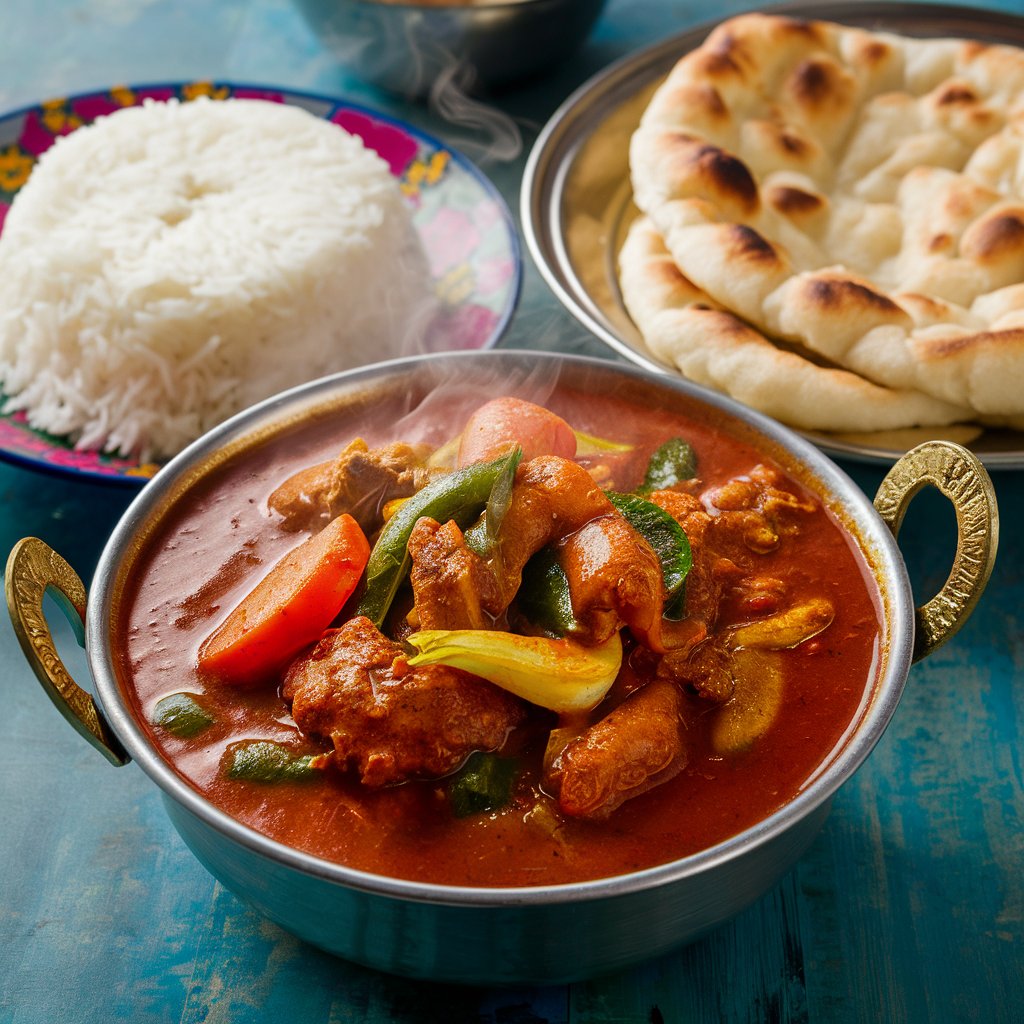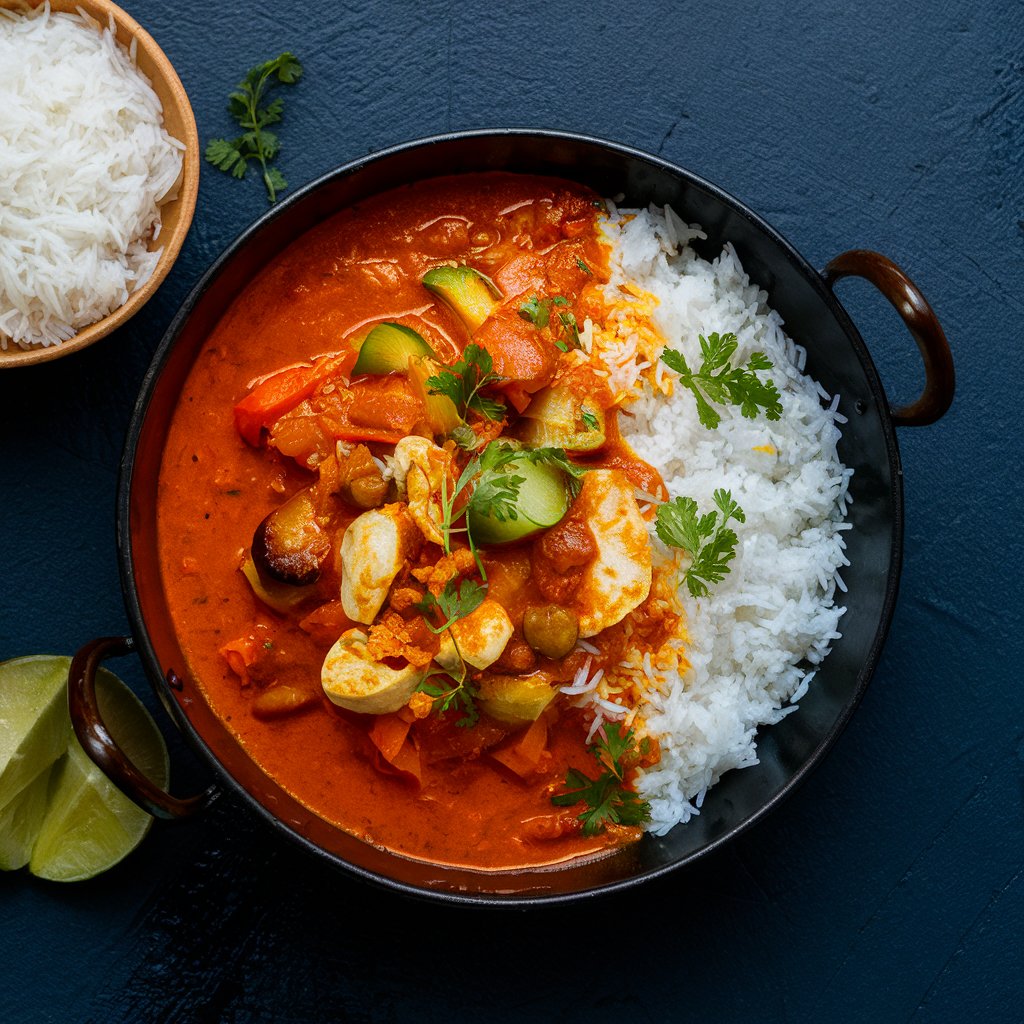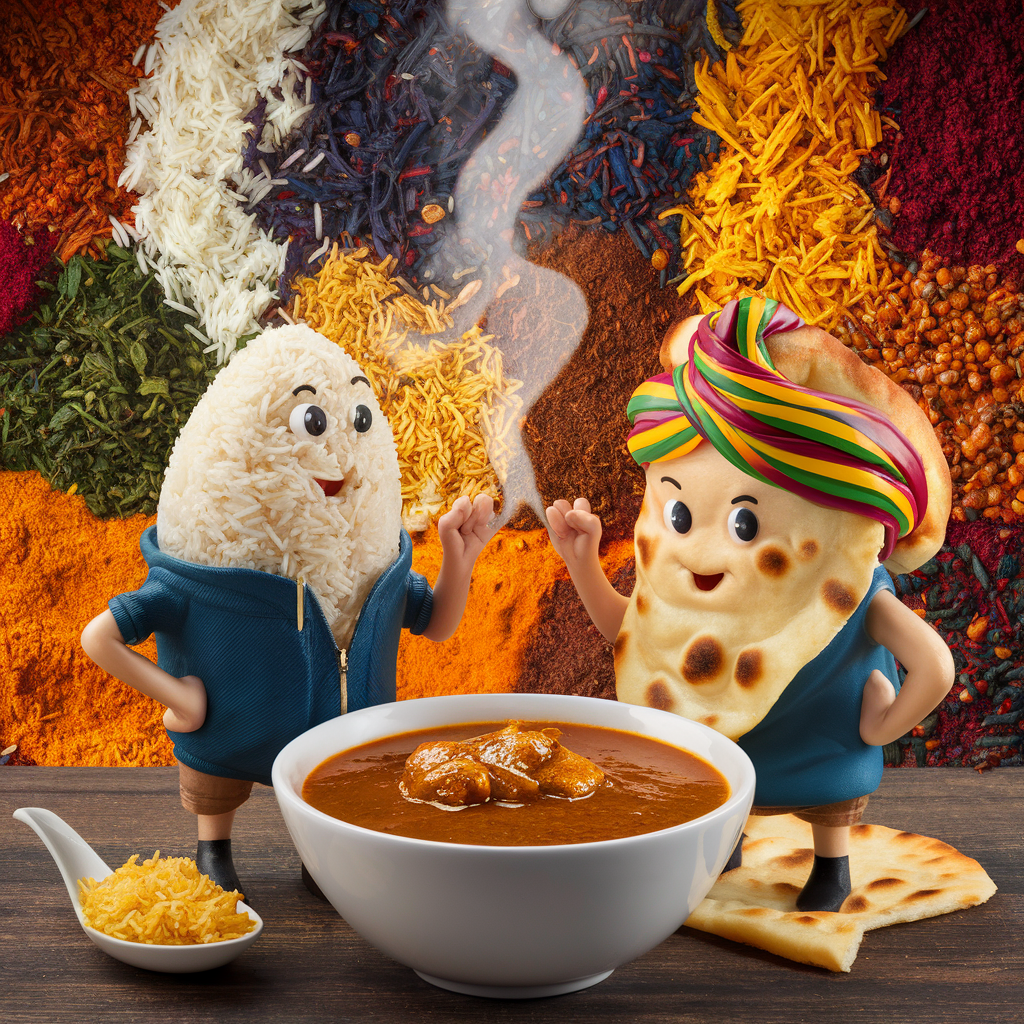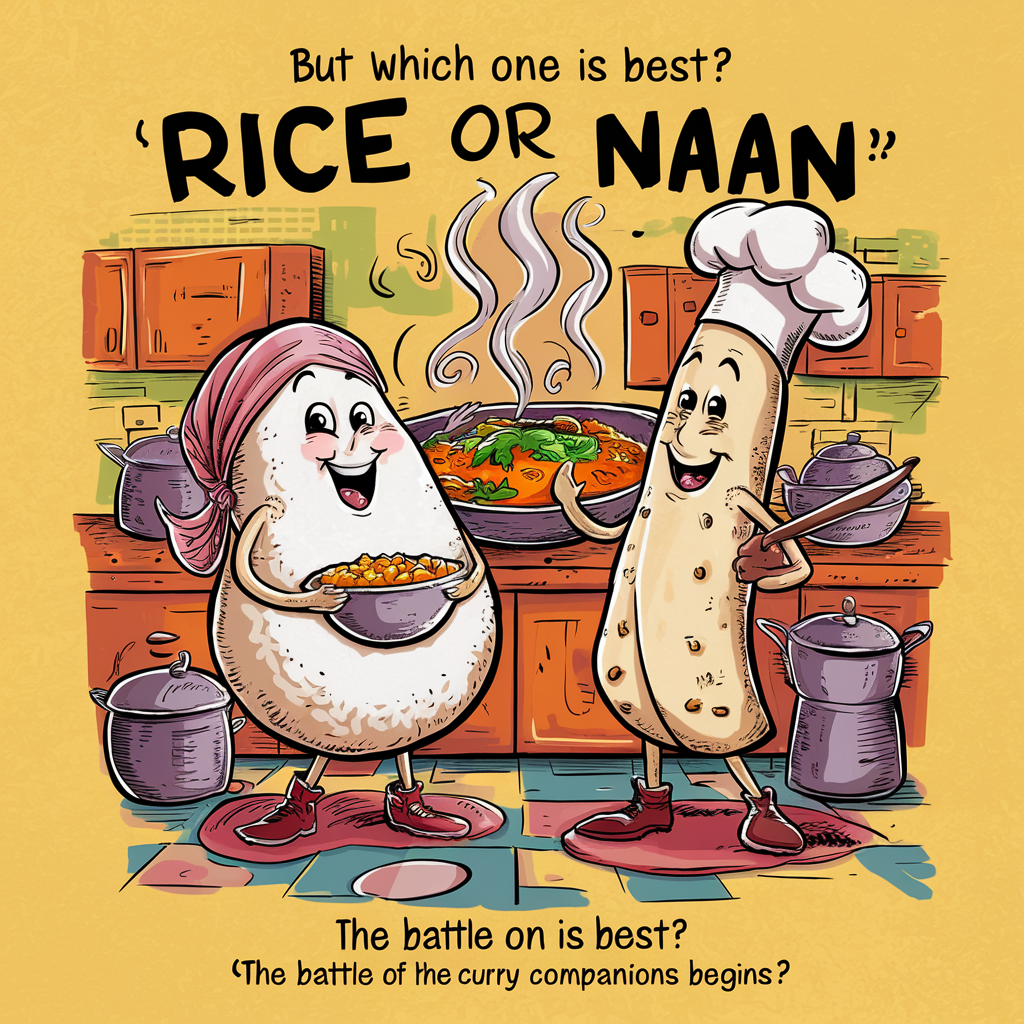 When enjoying a delicious curry, the choice of accompaniment is crucial. The debate over whether rice or naan pairs better with curry has been ongoing for years. Both options have their unique benefits and flavors. In this article, we’ll explore the differences between rice and naan as curry pairings. We’ll dive into the cultural significance, nutritional benefits, and taste profiles to help you decide which is the ultimate companion for your curry.
When enjoying a delicious curry, the choice of accompaniment is crucial. The debate over whether rice or naan pairs better with curry has been ongoing for years. Both options have their unique benefits and flavors. In this article, we’ll explore the differences between rice and naan as curry pairings. We’ll dive into the cultural significance, nutritional benefits, and taste profiles to help you decide which is the ultimate companion for your curry.
The Cultural Roots of Curry Pairings
Curry is a diverse dish with roots spanning across South Asia, Southeast Asia, and even the Caribbean. It has evolved to include a wide variety of ingredients and spices, each region adding its own unique touch. This diversity also extends to the sides traditionally served with curry. Rice and naan are two of the most popular accompaniments, each with deep cultural roots.
Rice: A Global Staple Rice is a staple in many parts of the world, particularly in Asia. It serves as a neutral base that allows the rich, complex flavors of curry to shine. In countries like India, Thailand, and Japan, rice is the default choice with curry. The mild taste of rice complements the bold spices, making it an ideal choice for those who prefer a balanced flavor profile.
Naan: The Bread of India Naan, on the other hand, is a type of leavened bread originating from India. It’s soft, fluffy, and slightly chewy, making it perfect for scooping up curry. Naan is traditionally baked in a tandoor oven, giving it a slightly charred flavor that contrasts beautifully with the richness of curry. In Indian cuisine, naan is more than just a side dish; it’s an integral part of the meal, often used to scoop up thick, creamy curries.
Nutritional Comparison: Rice vs. Naan
When choosing between rice and naan, it’s important to consider the nutritional value of each option.
Rice: Light and Versatile Rice is low in fat and calories, especially when compared to bread. A serving of steamed white rice contains around 200 calories, with very little fat. Brown rice, a whole grain option, is even healthier, offering more fiber and nutrients. Rice is also gluten-free, making it a great choice for those with gluten sensitivities.
Naan: Rich and Filling Naan, while delicious, is higher in calories and fat. A typical serving of naan can contain upwards of 300 calories, largely due to the butter or ghee often used in its preparation. However, naan is also more filling than rice, which means you might eat less overall. For those looking to indulge in a richer, more decadent meal, naan is the way to go.
Taste and Texture: The Sensory Experience
The sensory experience of eating curry with rice versus naan is markedly different. Understanding these differences can help you choose the right pairing based on your personal preferences.
Rice: Soft and Soothing Rice has a soft, almost creamy texture that absorbs the curry’s sauce, allowing each bite to be infused with flavor. The grains of rice separate easily, making it a great choice for curries with a lot of sauce. The mildness of rice also serves as a palate cleanser, balancing out the heat and spices in the curry.
Naan: Chewy and Satisfying Naan offers a more interactive eating experience. Its chewy texture contrasts with the soft, tender meat and vegetables in the curry. The slightly charred edges of naan add a smoky flavor that enhances the taste of the curry. Naan is perfect for thicker curries that can be scooped up, making each bite more substantial and satisfying.
Versatility in Pairing: Adapting to Different Types of Curry
Different types of curry pair better with either rice or naan. Let’s explore how the nature of the curry can influence your choice.
Creamy Curries: Naan Takes the Lead Rich, creamy curries like butter chicken or paneer makhani are best enjoyed with naan. The bread soaks up the thick sauce without becoming soggy, making each bite more flavorful. The slight char on the naan adds a depth of flavor that complements the creamy curry, creating a perfect balance.
Spicy Curries: Rice for Relief For spicier curries like vindaloo or madras, rice is the ideal companion. The softness of rice can help temper the heat, providing a soothing contrast to the spicy curry. The neutrality of rice allows the complex spices to shine without overwhelming the palate.
Dry Curries: Naan for the Win Dry curries or those with less sauce, like tandoori chicken or aloo gobi, pair beautifully with naan. The bread adds a satisfying chewiness to each bite, making the meal more substantial. Plus, naan’s ability to scoop up the curry ensures that no flavor is left behind on the plate.
Soupy Curries: Rice Reigns Supreme Curries with a thinner, soup-like consistency, such as Thai green curry or South Indian sambar, are best paired with rice. The grains of rice absorb the liquid, allowing you to enjoy the full range of flavors in each spoonful. Rice provides a satisfying base that balances the intense flavors of these curries.
The Final Verdict: Rice or Naan?
The choice between rice and naan ultimately comes down to personal preference and the type of curry you’re enjoying. Both rice and naan have their strengths and can enhance your curry experience in different ways.

When to Choose Rice:
- You prefer a lighter, low-calorie option.
- The curry is spicy, and you need a neutral base.
- The curry is soupy, and you want to absorb the sauce.
When to Choose Naan:
- You want a richer, more indulgent meal.
- The curry is creamy or dry, and you want to scoop up every bite.
- You enjoy the interactive experience of using bread with your meal.
A Balanced Approach: Why Not Both?
For those who can’t choose between rice and naan, why not have both? Combining rice and naan in a single meal allows you to enjoy the best of both worlds. Start with rice to soak up the sauce, then switch to naan for scooping up the thicker parts of the curry. This approach provides a varied texture and flavor experience, making your meal even more enjoyable.
Conclusion
In the end, whether you prefer rice or naan with your curry, the key is to enjoy the meal. Both options offer unique benefits and can complement your curry in different ways. By understanding the cultural roots, nutritional value, and sensory experience of each, you can make an informed decision that enhances your dining experience. So next time you’re faced with the choice, consider the curry you’re having and choose the pairing that will make it shine. Happy eating!


